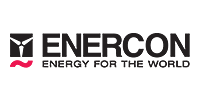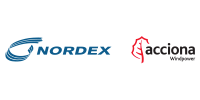Please click on...
 to download the presentation
to download the presentation
 to listen to the speaker audio recording (available after the event)
to listen to the speaker audio recording (available after the event)
 to download the abstract or full paper
to download the abstract or full paper
Speaker name to view their biography
|
TUESDAY, 27 SEPTEMBER 2016 14:30 - 16:00 POWER CONVERSION Room: Hall G1 |
Turbine technology |
|
Session description The session focuses on conversion systems for wind turbines based on power electronics, mainly for off-shore applications. The trend of higher power brings several challenges related to compliance with grid requirements. Harmonics and resonances become crucial issues that require proper analysis and innovative yet practical solutions. This session covers aspects related to power converter architectures and the modulation and control of the converter. We will look at the interaction with the electrical grid as well as practical aspects about how to optimise the primary control in different wind conditions and how to effectively test the control of large-scale wind systems in emulated conditions. You attended this session?
|
This session will be chaired by:  Marco Liserre, University of Kiel, Germany Marco Liserre, University of Kiel, Germany Konstantinos Pierros, ENERCON, United Kingdom Konstantinos Pierros, ENERCON, United Kingdom |

|
Markel Zubiaga Ingeteam Power Technology S.A., Spain GRID EMULATOR BASED TEST BED FOR IN-HOUSE VALIDATION OF HIGH POWER CONVERTERS ORIENTED TO OFFSHORE APPLICATIONS Abstract ID: 46  198_WindEurope2016presentation.pptx (4.59 MB)
Download full paper: 198_WindEurope2016presentation.pptx (4.59 MB)
Download full paper:  PDF (0.62 MB) PDF (0.62 MB)
|

|
Pawel Prylinski ABB Sp. z o.o., Poland OPTIMIZATION OF OFFSHORE PLATFORM TRANSFORMERS – HOW CAN THEY SUPPORT LCOE TARGETS Abstract ID: 88  200_WindEurope2016presentation.pptx (5.49 MB)
Full paper not available 200_WindEurope2016presentation.pptx (5.49 MB)
Full paper not available |

|
Stephan Ebner ABB Switzerland Ltd, Switzerland FREQUENCY CONVERTERS IN WIND TURBINES – A TECHNICAL BOON OR BANE? AN INTRODUCTION TO A STATE-OF-THE-ART CONVERTER TECHNOLOGY AS USED IN LARGE OFFSHORE WIND TURBINES Abstract ID: 127  196_WindEurope2016presentation.pptx (19.36 MB)
Full paper not available 196_WindEurope2016presentation.pptx (19.36 MB)
Full paper not available |

|
Salvador Boleko Ribas Nordex and Acciona Windpower, Spain ENHANCED ACTIVE POWER CONTROL AND PRIMARY FREQUENCY CONTROL THROUGH DYNAMIC ESTIMATION OF EFFECTIVE WIND SPEED Abstract ID: 291  199_WindEurope2016presentation.pptx (2.97 MB)
Full paper not available 199_WindEurope2016presentation.pptx (2.97 MB)
Full paper not available |

|
Paul McKeever ORE Catapult, United Kingdom HIGH DEFINITION MMC FOR PLATFORM-LESS HVDC OFFSHORE WIND POWER COLLECTION SYSTEMS Abstract ID: 326  197_WindEurope2016presentation.pptx (4.22 MB)
Full paper not available 197_WindEurope2016presentation.pptx (4.22 MB)
Full paper not available |
|
TUESDAY, 27 SEPTEMBER 2016 17:00 - 18:30 INNOVATIVE ROTOR DESIGN Room: Hall G1 |
Turbine technology |
|
Session description In the conversion of wind power, the rotor is the first point of energy transformation, transforming the kinetic energy of the wind into torque and rotation. Rotor technology sets a limit of the energy converted and the loading required to convert this energy. The load cycles are design drivers, influencing the mass and operation of the rotor, and therefore the entire turbine. In addition to extracting kinetic energy from the flow, the rotor creates a pressure field that generates the wake and leads to noise generation. Rotor design optimisation must therefore account for power and load optimisation, constrained by the full lifecycle, fatigue life and noise, among other boundary conditions. This session focus on innovations in both rotor design methodologies and components. You attended this session?
|
This session will be chaired by: _-_Photo_2016.jpg) Mark Hancock, Blade Dynamics, United Kingdom Mark Hancock, Blade Dynamics, United Kingdom Danielle Ragni, TU Delft, The Netherlands Danielle Ragni, TU Delft, The Netherlands |

|
Pablo Noever Castelos Leibniz University Hannover, Germany THE IMPACT OF GEOMETRIC NON-LINEARITIES ON THE FATIGUE ANALYSIS OF TRAILING EDGE BOND LINES IN WIND TURBINE ROTOR BLADES Abstract ID: 35  27_WindEurope2016presentation.pptx (20.47 MB)
Full paper not available 27_WindEurope2016presentation.pptx (20.47 MB)
Full paper not available |

|
Johannes Georg Leib DNV GL, Germany COST OF ENERGY SAVING POTENTIALS BY INNOVATIVE TECHNICAL GUIDELINES FOR WIND TURBINE ROTOR BLADES Abstract ID: 38  28_WindEurope2016presentation.pptx (2.72 MB)
Full paper not available 28_WindEurope2016presentation.pptx (2.72 MB)
Full paper not available |

|
Ashish Singh LM Wind Power, India PRODUCT INSERTION OF LM WIND POWER SERRATIONS Abstract ID: 135  26_WindEurope2016presentation.pptx (40.60 MB)
Full paper not available 26_WindEurope2016presentation.pptx (40.60 MB)
Full paper not available |

|
Vasileios Pettas DTU Wind Energy, Denmark POWER PERFORMANCE OPTIMISATION AND LOADS ALLEVIATION WITH ACTIVE FLAPS USING INDIVIDUAL FLAP CONTROL Abstract ID: 324  25_WindEurope2016presentation.pptx (66.49 MB)
Download full paper: 25_WindEurope2016presentation.pptx (66.49 MB)
Download full paper:  PDF (0.72 MB) PDF (0.72 MB)
|

|
Christian Frank Andersen LM Wind Power, Denmark ROTOR DESIGN APPROACH FOR EXTENDING WIND TURBINE PLATFORM LIFECYCLE Abstract ID: 480  24_WindEurope2016presentation.pptx (3.52 MB)
Full paper not available 24_WindEurope2016presentation.pptx (3.52 MB)
Full paper not available |
|
WEDNESDAY, 28 SEPTEMBER 2016 11:30 - 13:00 TURBINES OPERATING IN LOW TEMPERATURES Room: Hall G2 |
Turbine technology |
|
Session description Cold climate sites are characterised by the occurence of icing events and/or periods with temperatures below the operational limits of standard wind turbines. This session will address specific challenges faced during the operation of wind farms in cold climates. Topics include low-temperature compliance testing of wind turbines, methods for detection and analysis of icing events, as well as the operational performance of de- and anti-icing systems. You attended this session?
|
Co-chair:  Jens Madsen, Suzlon Energy A/S, Denmark Jens Madsen, Suzlon Energy A/S, Denmark Julia Gottschall, Fraunhofer IWES, Germany Julia Gottschall, Fraunhofer IWES, Germany |

|
Gesa Ziemer HSVA Hamburgische Schiffbau-Versuchsanstalt GmbH , Germany ICE ACTION ON OFFSHORE WIND TURBINE FOUNDATIONS - MITIGATING ICE LOADS AND ICE-INDUCED VIBRATIONS  706_WindEurope2016presentation.pptx (3.52 MB) 706_WindEurope2016presentation.pptx (3.52 MB)
|

|
Matthew Wadham-Gagnon TCE, Canada WIND TURBINE CONTROL IN ICING CLIMATE  71_WindEurope2016presentation.pptx (9.95 MB) 71_WindEurope2016presentation.pptx (9.95 MB)
|

|
Pieter Jan Jordaens Sirris, Belgium LOW TEMPERATURE COMPLIANCE TESTING OF WIND TURBINE APPLICATIONS FOR THE COLD CLIMATE WIND POWER MARKET Abstract ID: 65  76_WindEurope2016presentation.pptx (15.34 MB)
Download full paper: 76_WindEurope2016presentation.pptx (15.34 MB)
Download full paper:  PDF (3.99 MB) PDF (3.99 MB)
|

|
René Cattin Meteotest, Switzerland EVALUATION OF ICE DETECTION SYSTEMS FOR WIND TURBINES Abstract ID: 79  77_WindEurope2016presentation.pptx (1.78 MB)
Full paper not available 77_WindEurope2016presentation.pptx (1.78 MB)
Full paper not available |

|
Nils Lehming Nordex Energy GmbH, Germany OPERATIONAL EXPERIENCE OF WIND TURBINES IN COLD CLIMATE  737_WindEurope2016presentation.pptx (6.92 MB) 737_WindEurope2016presentation.pptx (6.92 MB)
|
|
WEDNESDAY, 28 SEPTEMBER 2016 14:30 - 16:00 ADVANCED CONTROL STRATEGIES FOR WIND PLANTS Room: Hall G2 |
Turbine technology |
|
Session description Modern control design methods like non-linear model predictive control can take account of complex dynamics and actuator constraints, while making use of richer information input from advanced sensors such as LIDARs. They contribute to the coordinated control of entire wind farms while meeting new operational demands from the electricity system. The session addresses advanced state estimation methods, an important component of such controllers. You will hear about field test results from a controller using wind preview from a LIDAR sensor as well as changes in design and certification guidelines needed to account for the use of LIDARs. You attended this session?
|
Co-chair:  Ervin Bossanyi, DNV GL, United Kingdom Ervin Bossanyi, DNV GL, United Kingdom William Leithead, University of Strathclyde, United Kingdom William Leithead, University of Strathclyde, United Kingdom |

|
Bastian Ritter Industrial Science GmbH, Germany MAKING NONLINEAR STATE ESTIMATION TECHNIQUES READY FOR USE IN INDUSTRIAL WIND TURBINE CONTROL SYSTEMS Abstract ID: 57 Download presentation:  92_WindEurope2016presentation.pdf (1.55 MB)
Download full paper: 92_WindEurope2016presentation.pdf (1.55 MB)
Download full paper:  PDF (0.68 MB) PDF (0.68 MB)
|

|
Nikolai Hille DNV GL Energy, Germany GUIDANCE FOR DESIGN AND CERTIFICATION OF WIND TURBINES WITH LIDAR-ASSISTED CONTROL Abstract ID: 132  96_WindEurope2016presentation.pdf (0.86 MB)
Full paper not available 96_WindEurope2016presentation.pdf (0.86 MB)
Full paper not available |

|
Jonas Kazda Technical University of Denmark, Denmark FRAMEWORK OF MULTI-OBJECTIVE WIND FARM CONTROLLER APPLICABLE TO REAL WIND FARMS Abstract ID: 282  95_WindEurope2016presentation.pptx (1.51 MB)
Download full paper: 95_WindEurope2016presentation.pptx (1.51 MB)
Download full paper:  PDF (0.31 MB) PDF (0.31 MB)
|

|
Axel Schild IAV GmbH, Germany HIGH PERFORMANCE NONLINEAR MODEL PREDICTIVE CONTROL FOR WIND TURBINES Abstract ID: 317  93_WindEurope2016presentation.pdf (1.40 MB)
Full paper not available 93_WindEurope2016presentation.pdf (1.40 MB)
Full paper not available |

|
David Schlipf Stuttgart Wind Energy (SWE), Germany FIELD TESTING OF FLATNESS-BASED FEEDFORWARD CONTROL ON THE CART2 Abstract ID: 485  94_WindEurope2016presentation.pdf (2.72 MB)
Full paper not available 94_WindEurope2016presentation.pdf (2.72 MB)
Full paper not available |
|
THURSDAY, 29 SEPTEMBER 2016 09:00 - 10:30 LOADS AND FATIGUE Room: Hall G2 |
Turbine technology |
|
Session description In this session, participants will hear about the latest developments in wind turbine loading and system behaviour. Presentations will cover a variety of topics - from modelling approaches to turbine control. The research work presented brings new approaches which will help the industry increase the reliability of turbines and reduce installation costs, especially offshore. Presented results will rely on real-world measurements and operational data. You attended this session?
|
Co-chair:  Michael Muskulus, Norwegian University of Science and Technology (NTNU), Norway Michael Muskulus, Norwegian University of Science and Technology (NTNU), Norway Fabian Vorpahl, Senvion, Germany Fabian Vorpahl, Senvion, Germany |

|
Ricardo Faerron Guzmán Stuttgart Wind Energy, Germany RECOMMENDATIONS FOR LOAD VALIDATION OF AN OFFSHORE WIND TURBINE WITH THE USE OF STATISTICAL DATA: EXPERIENCE FROM ALPHA VENTUS Abstract ID: 183  123_WindEurope2016presentation.pdf (1.10 MB)
Download full paper: 123_WindEurope2016presentation.pdf (1.10 MB)
Download full paper:  PDF (0.88 MB) PDF (0.88 MB)
|

|
Narasimhan Sampath Kumar Atkins Limited, United Kingdom APPROACH TO WIND WAVE CORRELATION IN COUPLED ANALYSIS OF OFFSHORE WTG SUBSTRUCTURES Abstract ID: 293  119_WindEurope2016presentation.pptx (3.66 MB)
Download full paper: 119_WindEurope2016presentation.pptx (3.66 MB)
Download full paper:  PDF (0.76 MB) PDF (0.76 MB)
|

|
Rasoul Shirzadeh ForWind, Germany APPLICATION OF TWO PASSIVE STRATEGIES ON THE LOAD MITIGATION OF LARGE OFFSHORE WIND TURBINES Abstract ID: 300  121_WindEurope2016presentation.ppt (5.49 MB)
Download full paper: 121_WindEurope2016presentation.ppt (5.49 MB)
Download full paper:  PDF (1.29 MB) PDF (1.29 MB)
|

|
Carlos Gonzalez SgurrControl, United Kingdom FIELD TESTS OF INDIVIDUAL BLADE CONTROL AND ITS IMPACT ON THE WIND TURBINE COMPONENTS LIFETIME Abstract ID: 404  122_WindEurope2016presentation.pptx (4.59 MB)
Download full paper: 122_WindEurope2016presentation.pptx (4.59 MB)
Download full paper:  PDF (0.35 MB) PDF (0.35 MB)
|

|
Sebastian Kaus Senvion, Germany MACHINE LEARNING ALGORITHMS FOR WIND TURBINE POWER PERFORMANCE MONITORING – TRACKING OPTIMAL YAW ALIGNMENT BASED ON SCADA DATA Abstract ID: 463  120_WindEurope2016presentation.pptx (0.56 MB)
Full paper not available 120_WindEurope2016presentation.pptx (0.56 MB)
Full paper not available |
|
THURSDAY, 29 SEPTEMBER 2016 11:30 - 13:00 COMPUTATIONAL AERODYNAMICS Room: Hall G2 |
Turbine technology |
|
Session description The session deals with aerodynamics, in particular computational aerodynamics. The session investigates a typical enginering blade element momentum (BEM) aerodynamic model, and demonstrates the merits of less empiric but computationally more comprehensive CFD modelling for yawed conditions and for tip vortex breakdown. We will also discuss the validation by 2D wind tunnel tests for high Reynolds numbers and how to use aerodynamics computations to analyse the effect of protuberances on blades. You attended this session?
|
This session will be chaired by:  Peter Hauge Madsen, DTU Wind Energy, Denmark Peter Hauge Madsen, DTU Wind Energy, Denmark John Korsgaard, LM Wind Power, Denmark John Korsgaard, LM Wind Power, Denmark |

|
Bernhard Stoevesandt Fraunhofer IWES, Germany INVESTIGATION OF THE VALIDITY OF BEM FOR THE SIMULATION OF WIND TURBINES IN COMPLEX LOAD CASES AND A COMPARISON WITH EXPERIMENTS AND CFD Abstract ID: 348  187_WindEurope2016presentation.pdf (1.74 MB)
Full paper not available 187_WindEurope2016presentation.pdf (1.74 MB)
Full paper not available |

|
Mohamed Sayed University of Stuttgart, Germany 3-D TIME-ACCURATE CFD SIMULATIONS OF A MULTI-MEGAWATT SLENDER BLADED HORIZONTAL AXIS WIND TURBINE (HAWT) UNDER YAWED FLOW CONDITIONS Abstract ID: 167  188_WindEurope2016presentation.pptx (2.37 MB)
Download full paper: 188_WindEurope2016presentation.pptx (2.37 MB)
Download full paper:  PDF (2.51 MB) PDF (2.51 MB)
|

|
Keita Kimura The University of Tokyo, Japan CFD SIMULATIONS OF A WIND TURBINE FOR ANALYSIS OF TIP VORTEX BREAKDOWN Abstract ID: 205  189_WindEurope2016presentation.pptx (3.36 MB)
Download full paper: 189_WindEurope2016presentation.pptx (3.36 MB)
Download full paper:  PDF (1.46 MB) PDF (1.46 MB)
|

|
Oscar Pires CENER, Spain ANALYSIS OF THE HIGH REYNOLDS NUMBER 2D TESTS ON A WIND TURBINE AIRFOIL PERFORMED AT TWO DIFFERENT WIND TUNNELS Abstract ID: 350  190_WindEurope2016presentation.ppt (4.85 MB)
Download full paper: 190_WindEurope2016presentation.ppt (4.85 MB)
Download full paper:  PDF (3.04 MB) PDF (3.04 MB)
|

|
Stefan Kleinhansl Aero Dynamik Consult GmbH, Germany EFFECTS OF PROTUBERANCES AND TUBERCLES ON WIND TURBINE GENERATOR BLADES Abstract ID: 266  191_WindEurope2016presentation.ppt (8.38 MB)
Full paper not available 191_WindEurope2016presentation.ppt (8.38 MB)
Full paper not available |
|
THURSDAY, 29 SEPTEMBER 2016 14:30 - 16:00 FLOATING WIND: TOWARDS COMMERCIAL DEPLOYMENT Room: Hall G2 |
Turbine technology |
|
Session description This session will look at the current position in floating wind energy, especially the latest technology developments towards its commercialization, and the challenges and future prospects of this exciting and promising way of harvesting offshore wind energy. You attended this session?
|
Co-chair:  Andrew Jamieson, Offshore Renewable Energy Catapult, United Kingdom Andrew Jamieson, Offshore Renewable Energy Catapult, United Kingdom Po Wen Cheng, Stuttgart University, Germany Po Wen Cheng, Stuttgart University, Germany |

|
Bruno Geschier IDEOL, France INTRODUCTORY KEYNOTE  162_WindEurope2016presentation.pptx (2.27 MB) 162_WindEurope2016presentation.pptx (2.27 MB)
|

|
Henrik Stiesdal Stiesdal, Denmark TETRASPAR – A NEW FLOATING CONCEPT  505_WindEurope2016presentation.pptx (0.93 MB) 505_WindEurope2016presentation.pptx (0.93 MB)
|

|
Markus Lerch Catalonia Institute for Energy Research (IREC), Spain MULTI-CRITERIA ASSESSMENT TOOL FOR FLOATING OFFSHORE WIND POWER PLANTS Abstract ID: 60  167_WindEurope2016presentation.pptx (4.48 MB)
Full paper not available 167_WindEurope2016presentation.pptx (4.48 MB)
Full paper not available |

|
Denis Matha Ramboll, Germany INDUSTRIAL DESIGN CONSIDERATIONS FOR FLOATING WIND TURBINES Abstract ID: 280  168_WindEurope2016presentation.pdf (1.44 MB)
Full paper not available 168_WindEurope2016presentation.pdf (1.44 MB)
Full paper not available |

|
Juan Amate Iberdrola Ingeniería y Construcción, Spain DEVELOPMENT OF A SEMI-SUBMERSIBLE BARGE FOR THE INSTALLATION OF A TLP FLOATING STRUCTURE: TLPWIND CASE STUDY Abstract ID: 472  169_WindEurope2016presentation.ppt (13.62 MB)
Full paper not available 169_WindEurope2016presentation.ppt (13.62 MB)
Full paper not available |

|
Gordon Stewart NTNU, Norway AERODYNAMIC SIMULATION OF THE MARINTEK BRACELESS SEMISUBMERSIBLE WAVE TANK TESTS Abstract ID: 666  539_WindEurope2016presentation.pptx (1.26 MB)
Full paper not available 539_WindEurope2016presentation.pptx (1.26 MB)
Full paper not available |




Follow EWEA on: